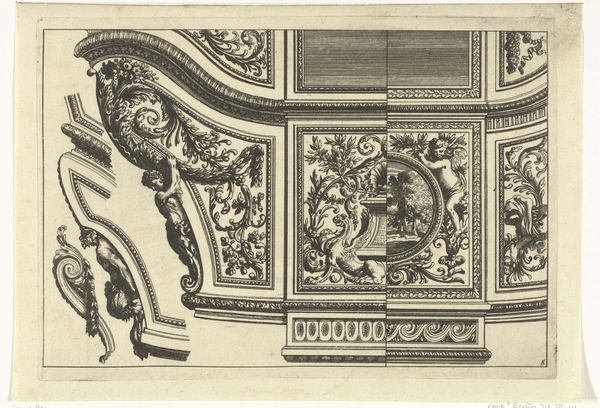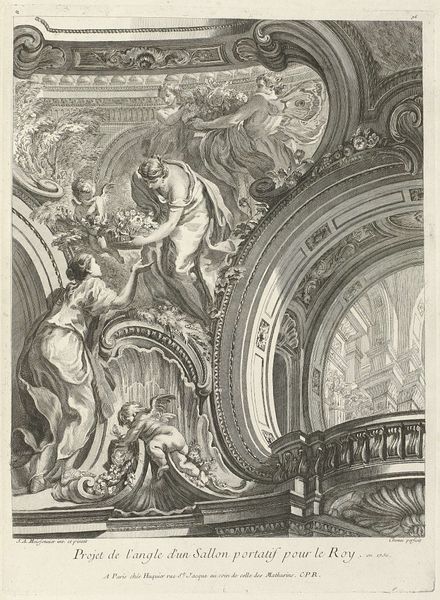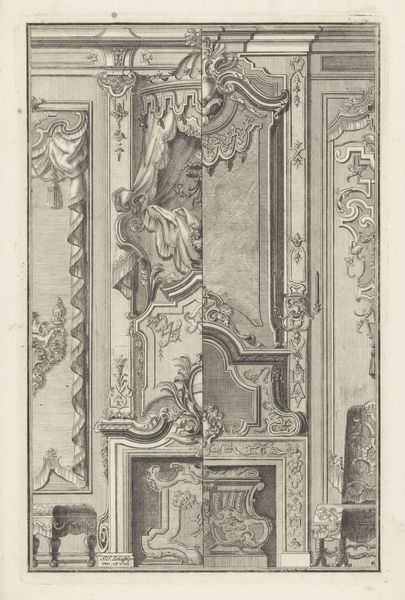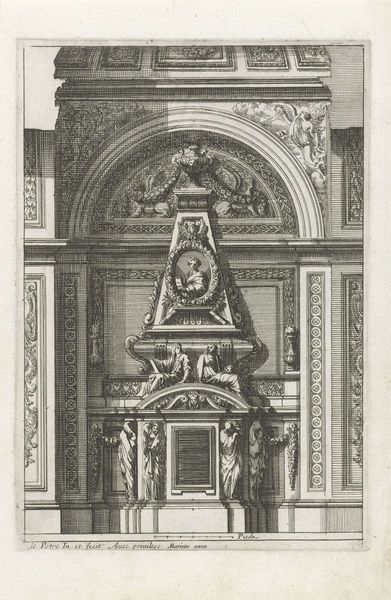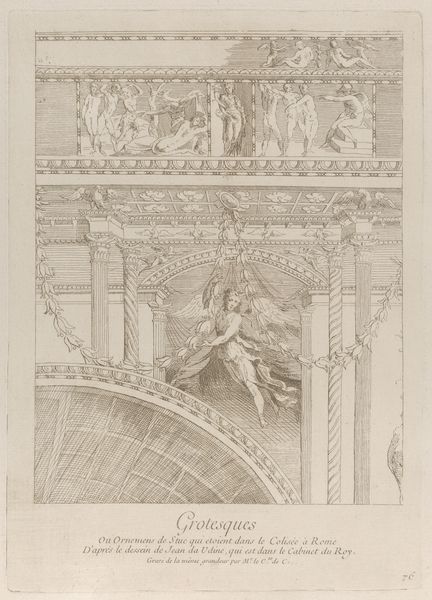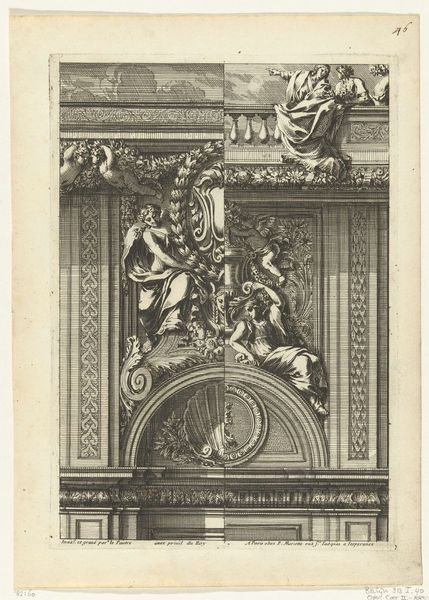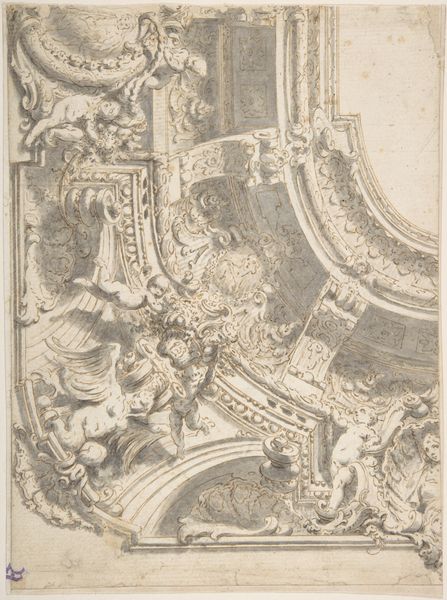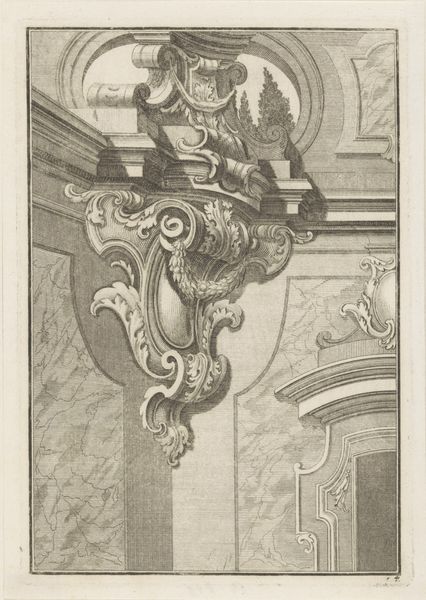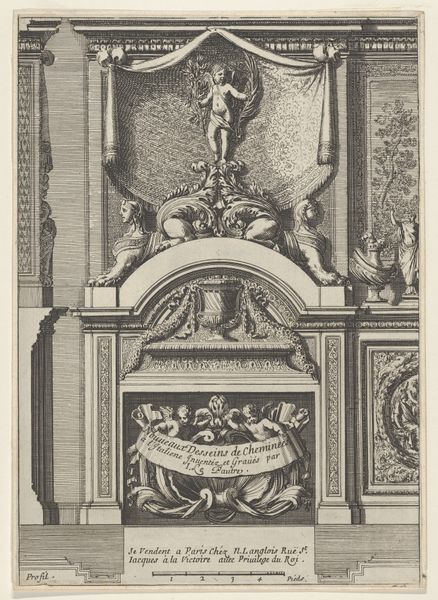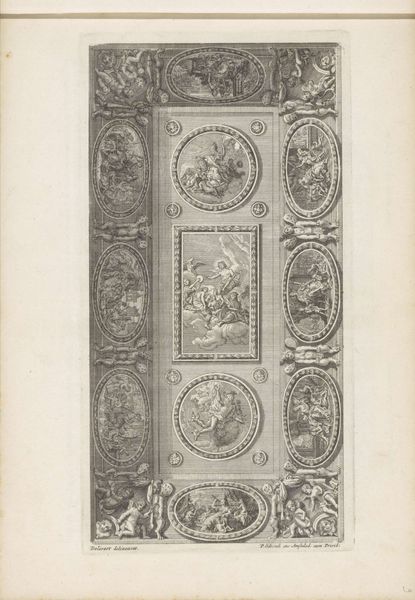
drawing, ornament, print, ink, engraving, architecture
#
drawing
#
ornament
#
allegory
#
baroque
#
pen drawing
# print
#
form
#
ink
#
geometric
#
line
#
engraving
#
architecture
Dimensions: height 222 mm, width 153 mm
Copyright: Rijks Museum: Open Domain
Curator: This drawing, "Kwart van rechthoekig plafond," translating to "Quarter of a Rectangular Ceiling," dates back to somewhere between 1665 and 1683. Currently residing here at the Rijksmuseum, its origins remain shrouded as it's attributed to an anonymous artist. Editor: The sheer density of line work is the first thing that strikes me! Look at the complexity—the textures almost vibrate. It definitely evokes the grandiosity you’d expect from a baroque ceiling, even in monochrome. Curator: It’s fascinating to consider how this detailed pen and ink drawing would have functioned. Was it a preparatory sketch, perhaps, for a larger fresco? Or could it be a record, documenting an existing, elaborate ceiling? Editor: Well, regardless, the act of transcription interests me. All of those fine lines, mimicking the light and shadow, the weight and three-dimensionality, show this incredible manual skill—labor devoted to replicating something that, in its completed state, might not even acknowledge the work put in on the drawing. Curator: Absolutely. And considering the social context of the time, this likely wasn’t just any craftsman. There was undoubtedly a strong guild system in place regulating the artistic practices of the era, carefully balancing production and controlling visual rhetoric. It speaks to the controlled means of art production. Editor: It's a testament to the Baroque period, with its celebration of ornamentation and illusion. These designs must have influenced a large range of crafts and social classes. What seems at first glance decorative actually informed the culture’s perspective and probably trade as well. Curator: Indeed! It's interesting to consider this work’s later impact and trajectory. As an engraving, how did it influence architectural styles and aesthetic sensibilities far beyond its initial context? The print medium democratizes access to these intricate designs. Editor: The very labor embedded in its creation elevates the status and social perspective in viewing these kinds of art forms. The material itself—paper, ink, and the engraver’s labor—takes on a central meaning, offering an art historical viewpoint of baroque style that contrasts traditional ones. Curator: It is the intersection of form and function, of artistic vision and tangible execution, that allows us to examine social narratives embedded in the most luxurious of ornaments. Editor: Looking closely, its complex details underscore an interesting relation to process, consumption, and social narratives. I have to admit, there is something deeply satisfying in seeing such an impressive array of techniques on display.
Comments
No comments
Be the first to comment and join the conversation on the ultimate creative platform.
